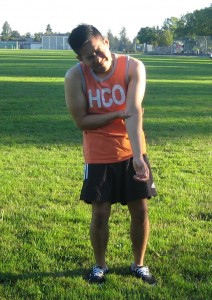An individual is at risk for a wasp sting if spending time outdoors. Remember that wasps, bees and other similar insects can cause allergic reactions. The severitiy of an insect sting reaction may vary from person to person. There are three types of reactions such as:
- A normal reaction will cause swelling, pain, itchiness, redness and the area is warm when touched
- A localized or large local reaction will cause swelling that spreads beyond the affected area.
- An allergic reaction is the most serious and needs medical help immediately.
Symptoms of a severe allergic reaction from a wasp sting
- Development of hives that looks like a red, itchy rash that can spread to other parts of the body.
- Difficulty breathing
- Restlessness and anxiety
- Swelling of the face, throat or tissues in the mouth
- Wheezing or difficulty swallowing
Development of hives that looks like a red, itchy rash that can spread to other parts of the body. - Fast pulse beat
- Dizziness and a sudden drop in blood pressure
Treatment
- If the stinger of the wasp is still lodged in the skin, remove it using a flat and blunt object such as a credit card, butter knife or fingernails. Avoid squeezing the stinger to prevent the spread of the venom.
- Elevate the affected area and remove any tight clothing. If the wasp sting is on the legs, arms, feet and hands, remove clothing that covers those areas, shoes or jewelries immediately to avoid difficulty in removing them once swelling develops.
- Apply an ice pack on the affected area for at least 10 minutes and remove it when the area becomes too cold. Rest for 10 minutes and then reapply again for another 10 minutes to lessen the pain and itchiness.
- Wipe vinegar on the affected area can also help.
- Take the prescribed antihistamines or acetaminophen to lessen the itchiness, burning sensations and pain caused by the wasp sting. The symptoms usually last for 2-5 days.
- Clean the affected area regularly using soap and water to lessen the risk for infection.
Tips
- Recognize the insect nest and avoid the area. Wasp nests can be found in the ground as dirt mounds or in rotten logs and crevices in walls.
- When going outdoors, wear shoes and socks. When trekking in wooded areas, wear long-sleeved shirts, long pants and shoes with socks.
- Avoid wearing perfumes or bright-colored clothing to prevent attracting the wasps.
- Avoid being alone especially when hiking, swimming and golfing or other outdoor activities.

